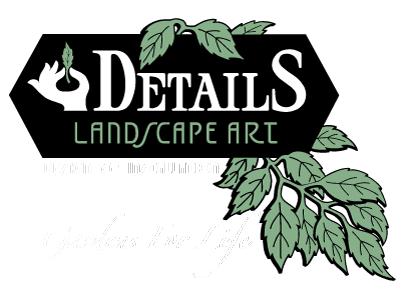Occasionally our clients ask us about installing a veggie garden. Details Landscape Art is a North Bay landscape contractor, building beautiful gardens since 1991. Our bread and butter is NOT vegetable gardening, but we do offer suggestions and advice to customers who want to grow their own food.
is a North Bay landscape contractor, building beautiful gardens since 1991. Our bread and butter is NOT vegetable gardening, but we do offer suggestions and advice to customers who want to grow their own food.
Vegetable gardening requires proper planning. Our initial recommendation to people is to start small. Vegetables can quickly overwhelming, with plants producing way more than the household can consume, and requiring more work than anticipated. Veggies need at least six hours of sunshine a day, so begin by assessing how much space is available in a mostly sunny spot. This will help determine which vegetables to grow – some require a substantial area relative to their yield. For example, melons and many types of squash grow on long vines. Corn also needs a lot of room. Beans and tomatoes, on the other hand, produce a large yield given the small space they need to grow in. If possible, the planting site should be level, for easier watering and to prevent excess water runoff. If not possible, then terracing or raised beds are a good idea.
Vegetable gardening is likely to be more successful if the soil is well prepared and amended with organic material. After removing weeds, the soil should be tilled several inches deep, either by hand with a spade or with a rototiller. Then add in a few inches of compost or a high nitrogen amendment, mixing well with the native soil. In nutrient rich clay soils, less amendments are needed, but more cultivating of the heavy soil is required. Sandy loam jobsites will call for more nutrients and less cultivation. If the soil is very poor in nutrients and difficult and rocky, raised beds are recommended. See our April 25, 2017 blog entitled ‘Building a Vegetable Box’. Fill the box or raised bed with good ‘veggie mix’ topsoil and compost for a successful harvest.
Fill the box or raised bed with good ‘veggie mix’ topsoil and compost for a successful harvest.
The garden may be started by sowing seeds or by using transplants. Certain plants lend themselves to sowing seeds – peas, beans, corn and carrots. Others like tomatoes and peppers need a long growing season and should be started with transplants.
We suggest that plants be staggered and thinned. If a row of lettuce is planted all at once in May, after germination the row needs to be thinned to allow the individual plants room to grow. Otherwise there will be many small tiny plants that will not produce much. Also, if a few feet of lettuce are planted in May, another few feet two weeks later, another few feet June first and so on through the summer growing season, the gardener will yield a continuous harvest of lettuce rather than an abundance all at once. If properly planned, a gardener will learn to plant combinations of veggies so that an entire salad may be harvested at once, and then the process repeated through the season, perhaps with different veggies.
Vegetable gardening includes vegetable watering. As with most plant material, young plants need constant moisture; as the plants or seedlings mature, a less frequent, but deeper soaking is recommended.
